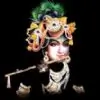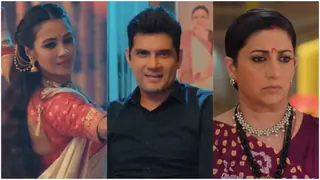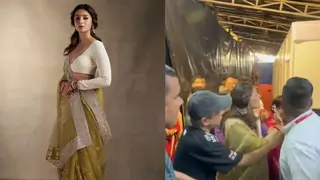Friends,
HAPPY DIWALI
Enjoy the day with crackers, and diyas, but before u start enjoying lets have a short glance over he rituals and the hitory of diwali, just a short journey
chalo
chuk
chuk
chuk
chuk
trrr
(train stopped, here we go)😉
Diwali in history
| |
The five day of Diwali
The first day of Diwali is called Dhanvantari Triodasi or Dhanwantari Triodasi also called Dhan Theras. The second day of Diwali is called Narak Chaturdasi. It is the fourteenth lunar day (thithi) of the dark forthnight of the month of Kartik and the eve of Diwali. On this day Lord Krishna destroyed the demon Narakasur and made the world free from fear. The third day of Diwali is the actual Diwali. This is the day when worship for Mother Lakshmi is performed. On the fourth day of Diwali, Goverdhan Pooja is performed. The fifth day of the diwali is called Bhratri Dooj. It is a day dedicated to sisters.
Hindu Mythology
The Story of Rama and Sita: Lord Rama was a great warrior King who was exiled by his father Dashratha, the King of Ayodhya, along with his wife Sita and his younger brother Lakshman, on his wife's insistence. Lord Rama returned to his Kingdom Ayodhya after 14 years of exile, in which he put an end to the demon Ravana of Lanka, who was a great Pundit, highly learned but still evil dominated his mind. After this victory of Good over Evil, Rama returned to Ayodhya. In Ayodhya, the people welcomed them by lighting rows of clay lamps. So, it is an occasion in honor of Rama's victory over Ravana; of Truth's victory over Evil.
The Story of King Bali and Vamana Avatar(the Dwarf): The other story concerns King Bali, who was a generous ruler. But he was also very ambitious. Some of the Gods pleaded Vishnu to check King Bali's power. Vishnu came to earth in the form of a Vamana(dwarf) dressed as priest. The dwarf approached King Bali and said "You are the ruler of the three worlds: the Earth, the world above the skies and the underworld. Would you give me the space that I could cover with three strides?" King Bali laughed. Surely a dwarf could not cover much ground, thought the King, who agreed to dwarf's request. At this point, the dwarf changed into Vishnu and his three strides covered the Earth, the Skies and the whole Universe! King Bali was send to the underworld. As part of Diwali celebrations, some Hindus remember King Bali.
The Defeat of Narkasur by Lord Krishna: Lord Vishnu in his 8th incarnation as Krishna destroyed the demon Narkasura, who was causing great unhappiness amongst the people of the world. Narkasura was believed to be a demon of filth, covered in dirt. He used to kidnap beautiful young women and force them to live with him. Eventually, their cries for rescue were heard by Vishnu, who came in the form of Krishna. First, Krishna had to fight with a five-headed monster who guarded the demon's home. Narkasura hoped that his death might bring joy to others. Krishna granted his request and the women were freed. For Hindus, this story is a reminder that good can still come out of evil.
Krishna and The Mountain: In the village of Gokula, many years ago, the people prayed to the God Indra. They believed that Indra sent the rains, which made their crops, grow. But Krishna came along and persuaded the people to worship the mountain Govardhan, because the mountain and the land around it were fertile. This did not please Indra. He sent thunder and torrential rain down on the village. The people cried to Krishna to help. Krishna saved the villagers by lifting the top of the mountain with his finger. The offering of food to God on this day of Diwali is a reminder to Hindus of the importance of food and it is a time for being thankful to God for the bounty of nature.
In Sikh perspective, Diwali is celebrated as the return of the sixth Guru, Guru Hargobind Ji from the captivity of the city, Gwalior. To commemorate his undying love for Sikhism, the towns people lit the way to, Harmandhir Sahib (referred to as the Golden Temple), in his honour.
Jain Festival Diwali
Among the Jain festivals, Diwali is one of the most important one. For on this occasion we celebrate the Nirvana of Lord Mahavira who established the dharma as we follow it. Lord Mahavira was born as Vardhamana on Chaitra Shukla 13th in the Nata clan at Khattiya-kundapura, near Vaishali. He obtained Kevala Gyana on Vishakha Shukla 10 at the Jambhraka village on the banks of Rijukula river at the age of 42.
okay now history class completed, come into the compartment of biology
Celebrate an Environmentally Safe Diwali
| |
This articles endeavours to sensitise the readers towards celebrating an environmentally safe Diwali by pointing out the major impacts that Diwali has on our environment. It is hoped that this articles will encourage you to celebrate a green Diwali, where there will be an explosion of joy without crackers!
How to celebrate an Eco Sensitive Diwali?
Now, that you are interested in celebrating an Eco - Sensitive Diwali, the first thing that you need to do is to make yourself aware about the effects the traditional Diwali celebrations has on the Mother Nature. Given below are three major environmental impacts that Diwali Festival have on our environment.
For most people lighting of firecrackers is the highlight of Diwali. Brighter the sparkles, louder the noise the greater the thrill!! In fact to many of us, these aesthetic forms of light seem so appropriate and most essential when celebrating the 'Festival of Lights'.
But little do people realize that in our increasingly populated and polluted cities, the temporary joy of watching the firecrackers is soon replaced by the intense air pollution caused by these. The toxic substances used in the firecrackers release toxic gases that are harmful to the health of all living beings. The high level of noise generated by the crackers cause immense suffering to birds and animals. Besides, Diwali crackers are dreaded by the sick and the ailing.
Sadly, few of us realise that the firecrackers used on Diwali are mostly made by very young children. Since the substances being handled are extremely toxic many of these child labourers get sick and die in their early teenage years.
Harmful effects of Chemicals used in crackers
Let's do a little analysis of crackers and list out in actual terms the harmful effects posed by each of its chemicals.
| Chemical | Impact |
| Copper Cadmium Lead Magnesium Sodium Zinc Nitrate Nitrite | Irritation of respiratory tract Anemia and damage to kidney Affects the nervous system Its dust and fumes cause metal fume fever Reacts violently with moisture and can attack the skin. Leads to vomiting Could lead to mental impairment Could lead to coma |
Noise Pollution caused by Fire Crackers
Crackers that make a noise of more than 125 decibels at four metres distance from the point of bursting are banned by the law. Given here are the hazards posed by excessive noise pollution caused by crackers:
|
An indirect but equally significant impact of Diwali on nature is due to the increased consumption. Since Diwali is also a celebration of abundance and wealth - many people believe that it is a good time to buy. Often, people go out and buy new items even when they don't need them. Advertisements and hoardings scream out to people offerings sales extravaganzas, bargains, discounts encouraging us to buy more and more!
How does this increased consumption affect Nature?
A point to realize is that all man made items are made out of materials that come from Nature. Be it plastic, metal, paper or cloth - all of these raw materials come directly from nature. Those sources that are non renewable (cannot be grown back) such as fossil fuels and metal ores get depleted and will one day run out. Depletion of non renewable natural resources is one of the most significant impact of consumerism.
For instance, the gold earrings that you will buy on Diwali is coming from a gold mine that is not only depleting the gold resources of the earth, but in the process of mining is probably ruining several ecosystems.
A question to ponder at this stage is, where do all the things we throw away go finally? Solid waste created by human beings which is non biodegradable (does not easily decompose) has to be filled into holes dug up in the ground. These 'landfills' as they are called may exist for centuries without completely getting integrated into the soil. The plastic toys that you are throwing away today, may exist in a landfill several generations after yours!
Five Principles of Nature conservation
To be able to conserve our natural environment it is important to keep in the following principles -
|
3. High Energy Consumption
The festival of lights puts a considerably heavy load on electrical energy sources that are already overloaded. The use of electric lights to adorn homes, business establishments, monuments and roads requires a huge amount of electricity. The older tradition of burning oil lamps is a possible alternative to electric lights - even though it does use oil, the duration of the lamps is shorter.
Eco sensitive Initiatives around Diwali
With the growing recognition of the impacts of Diwali on the environment, several groups have started to reinterpret the rituals and traditions to become more sensitive to nature. For instance, the children of NCL school, Pune celebrate a different Diwali by sharing clothes with the lesser privileged.
okay the journey completed and u can relax
but a final message
"what ever the religion may be, the diwali was celebrating the victory of good over bad, so wish u all too celebrate the most favourite festival of us and win over ur bads.😊



































